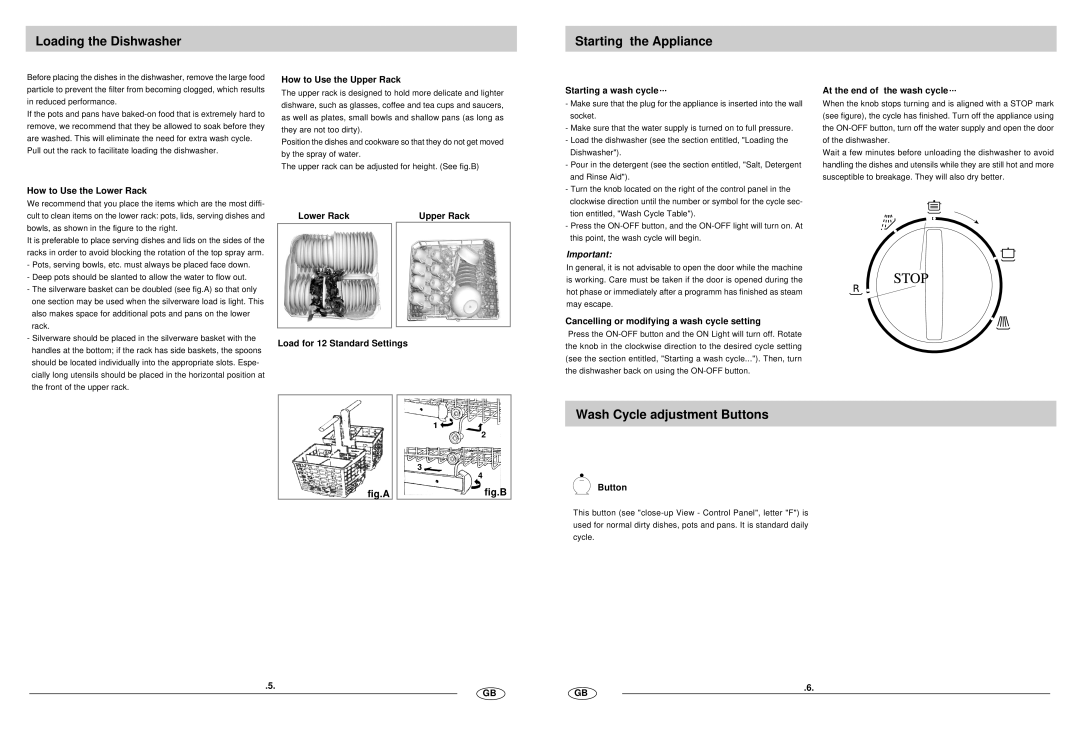WQP12-AFM2 specifications
The Haier WQP12-AFM2 is a compelling choice for those seeking an efficient and versatile dishwasher. This appliance represents a fusion of innovative technology and user-friendly features, designed to enhance the dishwashing experience while ensuring optimal performance.One of the standout features of the WQP12-AFM2 is its capacity. This dishwasher is designed to accommodate a wide variety of dish sizes and shapes, making it suitable for both small households and larger families. With the ability to hold up to 12 place settings, it ensures that you can clean a significant amount of dishes in one go, saving both time and energy.
The Haier WQP12-AFM2 is equipped with multiple wash programs, allowing users to choose the cleaning cycle that best suits their needs. From intensive washing for heavily soiled pots and pans to more delicate cycles for glassware, the variety of options makes it a versatile addition to any kitchen. The quick wash feature is particularly useful for those who need clean dishes in a hurry, offering a speedy solution without compromising on performance.
Energy efficiency is another key characteristic of this model. The dishwasher is designed to consume less water and electricity compared to standard machines, helping to reduce utility bills and lessen environmental impact. Its energy-saving mode ensures that the appliance operates with minimal resource consumption while maintaining effective cleaning power.
The design of the Haier WQP12-AFM2 is sleek and modern, making it a suitable fit for contemporary kitchens. Its stainless steel finish not only provides a stylish look but also ensures durability and easy maintenance. The interior is thoughtfully designed, with adjustable racks that improve loading flexibility and accommodate larger cookware.
In terms of technology, this dishwasher features advanced filtration systems that work to keep the water clean throughout the wash cycle. This ensures that dishes emerge spotless and free from residue. Additionally, the quiet operation of the WQP12-AFM2 makes it ideal for open-concept living spaces, where noise can be a concern.
Overall, the Haier WQP12-AFM2 stands out as a reliable dishwasher that combines efficiency, capacity, and modern technology. Its thoughtful features cater to a variety of dishwashing needs, while its design ensures it seamlessly integrates into any kitchen aesthetic. Whether you seek an appliance that saves you time, energy, or simply provides exceptional cleaning performance, the WQP12-AFM2 embodies a practical solution for today's busy households.

